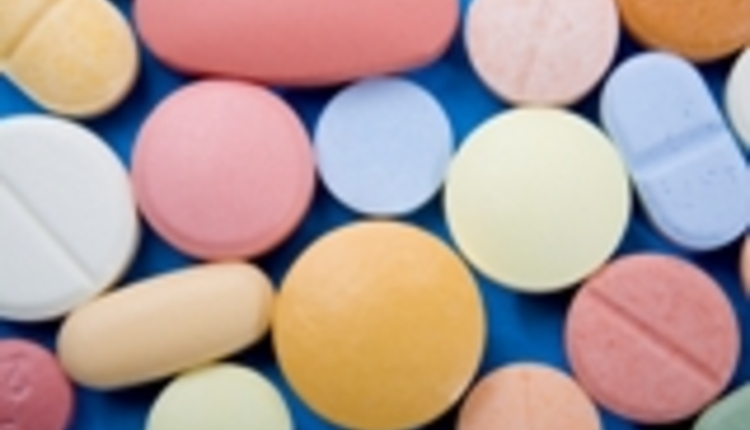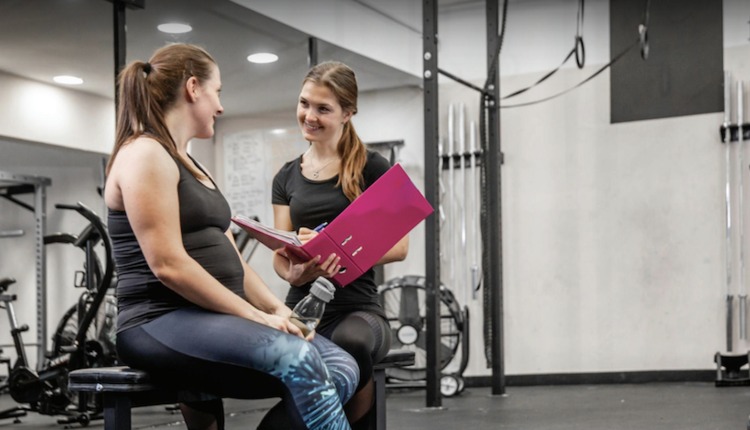Whether your clients are professional athletes, peewee football players, ballet dancers or �weekend warriors,� they probably know what it�s like to run out of steam during exercise. Maybe they have learned to live with sore, stiff muscles on a daily basis. Instead of accepting these consequences as inevitable, it is important that they understand that this does not necessarily have to be the case.
Eating after a workout is arguably the most important meal of the day and is one of the best ways to take the �post-workout blues� head on! Recovering from an exercise bout is impossible without the replenishment of both food and liquid to restore what was lost during exercise. It is important to consume the proper nutrients to refuel muscles and plenty of fluids to replace what was lost in sweat. The recommendations below will allow athletes to head out to the next practice, game or gym, full of energy and ready to play or train again!
The Importance of Carbohydrates
When working out, no matter what the activity, individuals will deplete a good portion of their muscle glycogen (the body�s storage form of carbohydrate), some protein and, depending on the length of training, possibly some fat. During exercise, muscle glycogen is the body�s primary fuel source and needs to be replenished. The primary objective of ingesting carbohydrates is to replenish glycogen stores. Carbohydrate should comprise approximately 0.7-1 g CHO/kg, should be moderate to high glycemic index, low-fiber carbohydrates and can be obtained through solid foods and/or beverages.
Protein Is Crucial, Too
Aside from foods that are high in carbohydrates, research has clearly demonstrated the advantages of consuming protein after exercise as well. Protein is important because it provides the necessary amino acids for the muscle cells to facilitate protein synthesis. This environment is conducive to muscle repair and development, which are both critical aspects to allow full recovery. Protein should comprise about one-fourth of the total amount of carbohydrate consumed, so the carbohydrate:protein ratio will be approximately 3:1 or 4:1. Like carbohydrates, protein can come from solid foods and/or beverages, as long as it is low in fat � fat will slow the absorption of the much-needed nutrients.
Re-hydrating the Body
Just as eating the proper balance of carbohydrate and protein is important to recovery, so is replenishing the body with fluid. During exercise, athletes lose fluids through sweat, and refueling the body with fluids aids in the prevention of fatigue, dehydration and injury. After practice or a game, athletes should immediately drink at least a half-liter (approximately two cups) of non-caffeinated or non-alcoholic fluid and continue to consume fluids throughout the remainder of the day. The most general recommendation is when an athlete goes to the bathroom, their urine should be very pale yellow or clear. This is one reason a liquid recovery product may be beneficial: Not only will it speed up the recovery process because of its rapid absorption, but it will also provide the much-needed fluids.
Proper Meal Timing
Athletes should eat their recovery foods as soon as possible after exercise or competition and should wait no longer than one hour to do so. This is the most critical period for the replenishment of muscle glycogen. Replenishing muscle glycogen is most crucial for those who are exercising more than one time per day because research has shown that glycogen replenishment can occur within 20 hours via adequate energy intake.
It is common for athletes to have a decreased appetite after training; however, if optimal performance is your goal, lack of appetite can�t stop you from consuming something. It is typically easier to consume liquid as opposed to solid food if you feel full after a workout, so liquid food again comes out on top to assist in the recovery process.
A Few Examples to Get You Started
An example of a solid meal with the right carbohydrate and protein combination would be a bowl of cereal, such as Grape-Nuts topped with low-fat or fat-free milk. Some other good examples are a couple of slices of turkey on a bagel, steamed rice with chicken and stir-fried vegetables or low-fat yogurt and fruit. If you prefer a liquid product, there are several on the market that contain carbohydrates and protein in the recommended 3:1 or 4:1 ratio that have been shown to be more beneficial than carbohydrate alone. Another great liquid option is low-fat or fat-free chocolate milk; it contains the recommended ratio of carbohydrates:protein, can be purchased in almost any store and is relatively cheap.
The goal of recovery nutrition is to prepare the body for the next workout. While the body is at rest, it is the athlete�s job to refuel it. By refueling the body, athletes may reduce muscle soreness and cramping, which are common complaints for many athletes. After a game or practice, it is imperative that athletes get enough fluids to re-hydrate and enough calories from carbohydrates and protein to replenish and rebuild muscle tissue. Making a conscious effort to put quality nutrients into your body will help you perform at the highest attainable level.
Christopher R. Mohr, PhD, RD, is the co-owner of Mohr Results, Inc and has created the ultimate sports nutrition DVD for young athletes � visit www.FuelLikeAChampion.com for more information.











